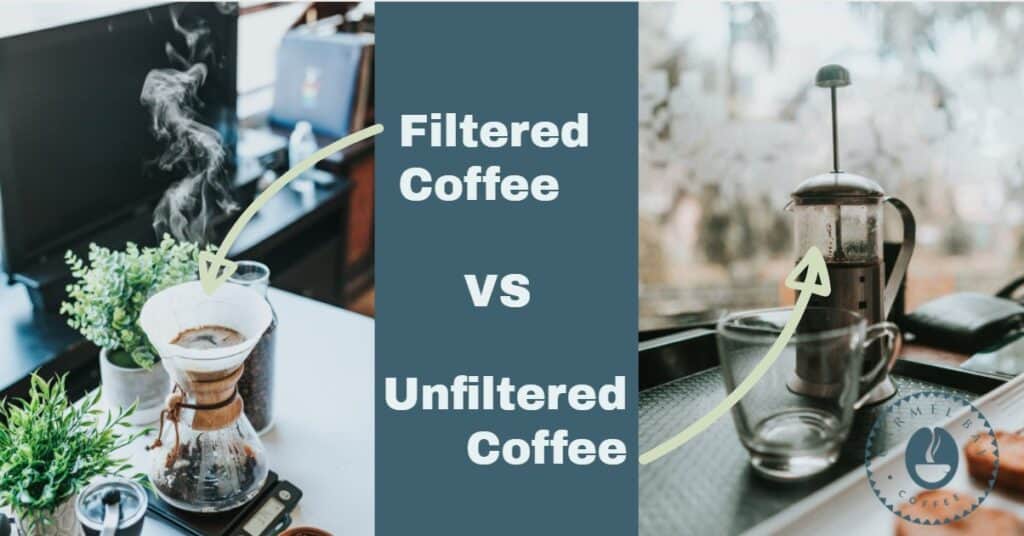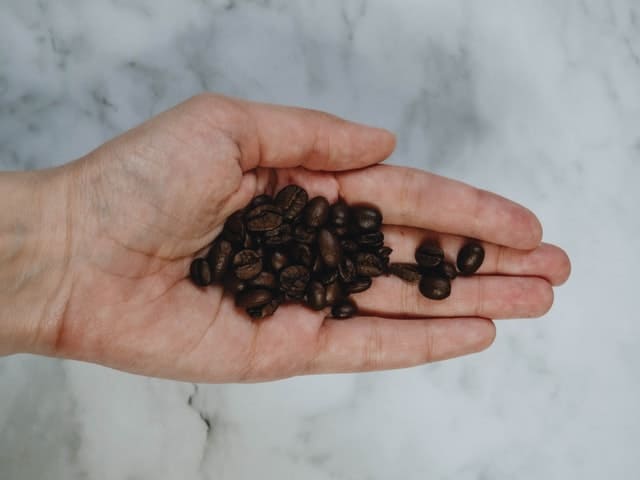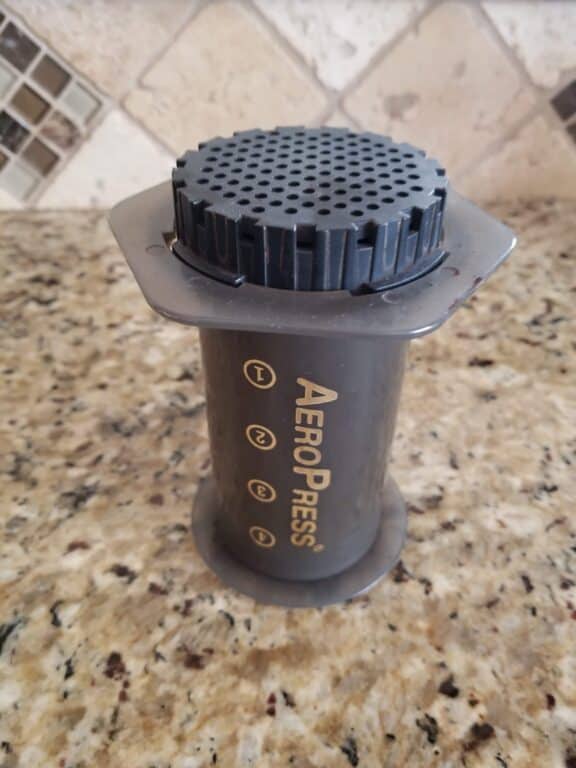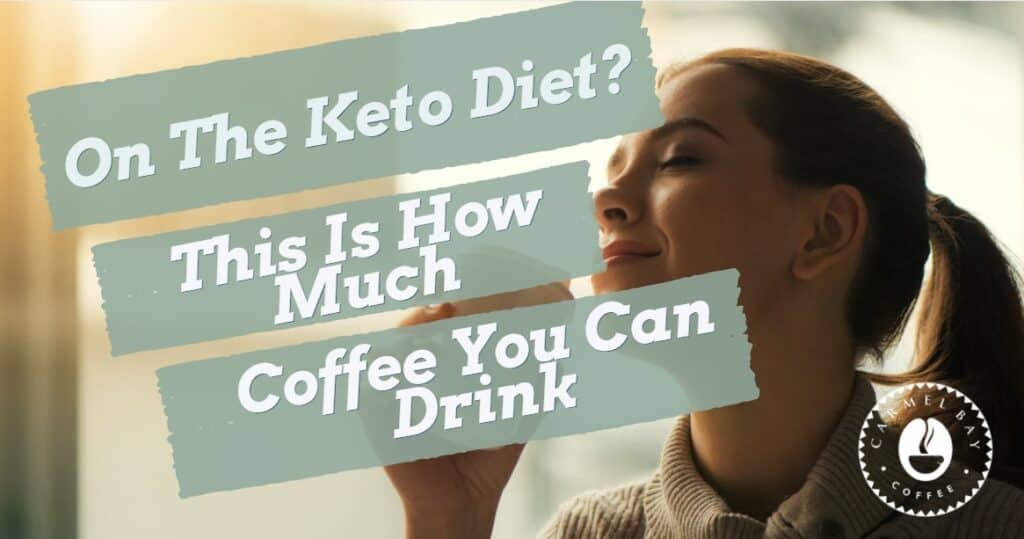Over the past five years, the health culture has really been booming! Different diets, fads, and workouts have effectively dominated the internet, helping bloom this collective interest in health and physical fitness.
It has everybody thinking twice about how our food affects us. All this health talk got me thinking about my routine and what I consume the most, and a big one was coffee. So, what’s the Healthiest Way To Brew Coffee?
The healthiest way to make coffee is with a paper filter. With a paper filter you reduce the amount of oils from the beans that end up in your cup.
When it boils down to it, there isn’t a wrong way to brew coffee. No matter the method, you have your essential elements. Boiling water, a filter (or maybe not), and coffee beans.
Unfiltered coffee, such as a French press or Moka pot, won’t harm you, but it can contain potentially harmful enzymes that can cause issues if consumed consistently in large quantities. It can also be a problem in folks with pre-existing health complications.
Filtered V.S Unfiltered Coffee

My Mom used to call unfiltered coffee “cowboy coffee.” It definitely makes it sound cooler, but is it worth it?
There are a few methods of brewing no-filter coffee, Turkish, French press, and Moka pot are the most popular. I love using a French press. It’s a fun and quick way for quality java in an instant, but I use it in moderation.
As stated above, filtered coffee is slightly healthier than unfiltered. Filtered coffee also has the benefit of tasting a little cleaner, if that’s what you’re looking for.
First off, all coffee is technically filtered. The water filters through coffee grounds into your cup. But when you skip the filter, your coffee gets infiltrated by cholesterol-raising substances.
These cholesterol-inducing compounds are called cafestol and kahweol. They are part of a family called diterpenes.
They dwell within the coffee beans’ natural oils but are captured mainly by the filter when brewing. Cafestol is specifically sinister to anyone who experiences heart or cardiovascular disorders.
Last year, the results of a 20-yearlong study consisting of 508,747 men and women drinking filtered and unfiltered coffee were published by the European Journal of Preventive Cardiology in Norway. The study revealed that 15 percent of the participants experienced reductions in heart and cardiovascular-related deaths when drinking filtered coffee, compared to 4-9 percent drinking unfiltered.
It also helps stave away type 2 diabetes by reducing blood pressure.
I want to add one more thing; filtered coffee is so much easier to clean! It comes right out and is tossed away. And for you environmentally friendly folks out there, mesh filters are the perfect solution! They effectively filter out cafestol and rinse right out in the sink!
Does This Mean That French Press Coffee Is Bad for You?

Well, kind of.
I love French press coffee. It is quick and easy to make, and I tend to have a little fun with it.
It was the perfect tool for when I had roommates and wanted to sneak a personal pot of coffee into my room as I worked.
It’s probably not a good idea to drink only from a French press.
People who experience rises in LDL-cholesterol levels usually find this to be the problem. LDL levels are linked to triglycerides, which is fat that’s stored for extra energy. The result of too many triglycerides is typical with French pressed (unfiltered) coffee.
A study performed by the Harvard Health Blog in 2016 shows that paper filters are over 300 percent more effective at trapping these devious molecules over metal filters. That’s where the problem with French press java truly lies, that metal filter. Metal filters used in any brewing process yields similar results.
Metal filters do a terrible job keeping phytochemicals out of your cup of joe.
While they still capture some of the diterpenes (cafestol and kahweol), they pale in comparison to their paper counterparts.
The bottom line is that too much of anything is bad for you. So, go ahead and bust that press out, just keep an eye on the moderation.
In fact, Aage Tverdal (pubmed), a researcher at the Norwegian Department of Public Health, says- “Whatever kind of coffee you drink, enjoy your coffee. If it’s convenient, drink filtered coffee, especially if you have high cholesterol.”
If using the French press is non-negotiable, then use a French press!
Different Coffee Brewing Methods
If you’re interested in making the best coffee you can at home, check out our article on leveling up your home Barista game.
I’ve had the same machine for almost a decade, and it’s never steered me wrong. It’s also the most traditional way folks brew coffee in the 21 st century, the good old-fashioned Mr. Coffee maker baby.
But there are countless brewing methods the internet is leaving to our disposal! Each with its unique twist and personality in your cup. Not everyone is boring like me.
For starters, we have the drip method. This is the most common form of brewing. These bad boys can be found in every authentic diner that rural America has to offer. A solid choice for anyone and especially for a large group. They are the embodiment of “don’t fix what ain’t broken.”
If thinking outside of the box is your thing, maybe the AeroPress method is a good choice.
An AeroPress is a fantastic alternative to a French press.
An AeroPress makes it easier to measure the amount of coffee being used, while still getting that full immersion taste. These can be a little hard to find but are fun to use. They consist of two plastic cylinders, a cap, and a filter. The first chamber fills with water, and the second press it out.
First, you want to dampen the filter by placing it inside the cap and pouring hot water through. This not only warms the cylinder but helps seal the lid when attached.
Attach the filter and steadily pour water through the grounds into the chamber. Let sit for 1 minute, then stir about 10-15 times, making sure water is distributed evenly.
Wait four minutes for extraction.
Now, attach the cap and quickly flip the vessel upside down over your coffee mug/thermos. Begin slowly pressing the second chamber, and coffee will start dripping into your cup.
Be patient, this can provide up to 25-30 pounds of pressure.
When you’re done, you just pop off the cap, and the pressed grounds come out like a coffee hockey puck. It’s actually fun to shoot the coffee puck into the trash bin! If you have an AeroPress, you know you’ve done this too!
Pour-Over brewing is a simple process. It cuts out the middleman and brews the coffee straight into what apparatus you’re using. You place a filter into a funnel and the funnel into a cup. Then just pour the hot water into the filter until full.
For you who enjoy dwelling in the challenging fringe, check out Siphon Brewing. Also known as the vacuum method, it’s an aged twist on coffee production. It uses a series of glass containers and plastic tubing; they’ll make your kitchen look like a chemistry lab!
Instead of using brute heat to make the coffee, this method consists of separate heating chambers of water, causing pressure in the tubes. This results in a vacuum effect pulling back the grounds from the water.
Siphon Brewing is a bit more work, but the results speak for themselves.
Have you ever tried Cold Brewing? A lot of people think cold brew and iced coffee are the same thing. But iced coffee is just regularly brewed coffee poured over iced. This is coffee brewed between cold and room temperatures between 12 to 20 hours. Since heat doesn’t activate the acids, cold brew tends to be on the milder side.
If you’re interested in cold and iced brewed coffee, make sure to take a look at our article, This is How to Make Iced Coffee at Home.
Battle of The Beans, Which Coffee Bean is Healthiest?

The stuff isn’t cheap, yet we buy mountains of the stuff every day. There’s an average of 27 million bags of coffee sold every year in the U.S. alone. That’s a lot of money spent on coffee, so why wouldn’t we find the best beans!
There are two main beans that are used for most coffee production around the world: Arabica and
Robusta beans.
Arabica is the higher-end beans used for all those fancy rich roasts. They make up 60% of all coffee
production around the planet, but that high quality doesn’t come without a catch. They are known
to be very sensitive beans. The plants they come from are easily influenced by their environment
and highly prone to disease and mold.
Robusta beans are slightly lower grade, but unlike its sister plant, it’s incredibly durable and almost
virtually immune to disease. You can grow these suckers in almost any climate, A true powerhouse.
These beans are typically used to make flavored coffee as they are cheaper than arabica beans.
Have you ever tried Green Coffee Beans? They might be the magic beans you didn’t know existed.
These are simply beans that have skipped the roasting process, served in their raw state.
They contain higher acidic properties, relieving constricted blood vessels preventing high blood pressure.
Their popularity within the health niche continues to rise every day.
Also, please pay attention to which roast you select; it makes a difference. For example, a light roast will be
significantly less oily than a dark roast. That’s because the heat doesn’t have a chance to release
those hidden oils in a light roast.
Benefits of Black Coffee

I’m not trying to sound like a “cool guy” over here, but black coffee is the way to go!
I love treating myself to some creative creamer on occasion, but the sugar dump that comes with it
always seems to slow me down. The last thing I want when trying to acquire more energy is a sugar crash.
Drinking black coffee also helps trim up that beach bod. It’s keto-friendly too! If you’re interested in keto, we have an article dedicated to the dos and don’ts of drinking coffee while on keto.
This is the nutrition list for the average cup of coffee: 0% fat, 0% cholesterol, 0% sodium, 0%
carbohydrates, 0% sugar, and 4% potassium.
Adding anything else to your coffee is only adding calories. Although there’s little evidence to back it up, black coffee is known to aid in weight loss by temporarily boosting your metabolism.
For you heavy coffee drinkers, you understand its…cleansing effects. It runs everything out of your
system providing you a clean slate.
Apart from your bowls, black coffee helps your brain too! It’s been observed increasing cognitive thought in individuals drinking between 3 to 4 cups a day. It also helps the liver by reducing the production of harmful enzymes responsible for fatty liver, cirrhosis, and a variety of cancers.
Aside from health, drinking black coffee gives you a chance to appreciate it. A chance to let the
beans’ true colors show and impress. Adding artificial creamers takes away from the vibrato of the
coffee.
I’m not saying it’s a war crime to use flavorings. Just be sure to use them sparingly. Plus, adding dairy
to coffee shortens its life outside of the pot. It’s okay to drink expired coffee, but not milk.
For more on this, take a look at our article, Coffee and Weight Gain: The Truth.
Signs That You Are Drinking Too Much Coffee

This is a touchy one for me because I know I tend to drink too much java. It’s easy to misdiagnosis the issue because why would coffee hurt us!? Well, we need water to live, but too much of that will kill you.
The most common signs are jittery and anxiety. Copious amounts of caffeine can wreak havoc on your heart, especially if you’re already prone.
There is actually a condition coined as “caffeinism.” It’s basically a bad case of the grumps induced by the sudden urge for caffeine or the crash you experience on the comedown. It gives you headaches, fatigue, and sometimes temporary tinnitus (ringing in the ears).
It’s important to remember that caffeine is just a drug, and like any drug, you can become addicted to it. Caffeine withdraws are rough and causes random irritability.
If you’re prone to gastrointestinal issues, its high acidity may be tampering with your stomach issues increasing the problem. If you have heartburn from coffee, it is preventable, and there’s coffee for people that suffer from it. Check out our article, 5 Ways To Prevent Heartburn from Coffee
All in all, everything comes down to moderation. If you keep a keen eye on your intake and listen to your body, you shouldn’t have to worry.
Wrapping Up
If you’re looking for the defacto, healthiest coffee brew, it’s black, filtered coffee. We also went through that if you love unfiltered coffee, it’s not the end of the world to incorporate it into your coffee diet.
So, for the most part, drink coffee how you like to drink it unless you’re directed by a doctor, most likely due to high cholesterol.
We have a great article, How Coffee Affects the Body, that you should check out!




